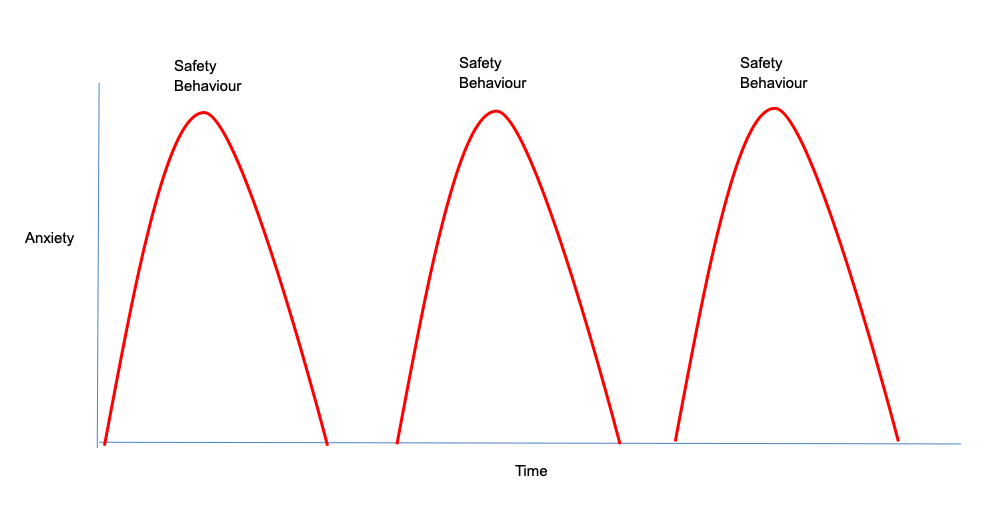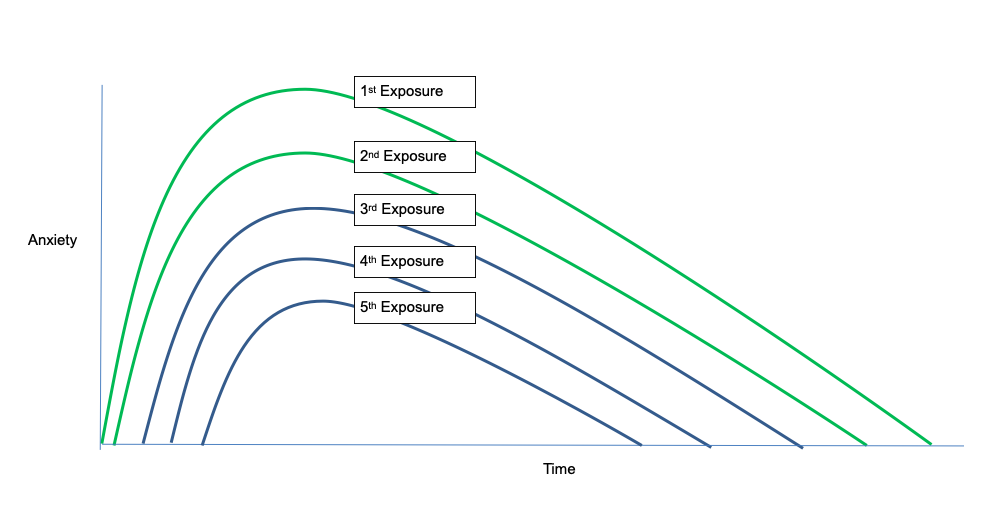At this time of year we see a lot of spiders in our gardens and our houses. In the past I really struggled with this as I had a phobia of spiders, but thanks to Exposure Therapy I’ve just been able to scroll through lots of images of our eight-legged friends to pick the one I’ve chosen for this blog. What’s more I love the sight of a spider’s web on an Autumnal morning, and I don’t scream for help if one ventures into my house.
Exposure and Response Prevention Therapy (shortened to ERP) is one of the key interventions which I teach and guide people through in my CBT clinic. It’s not just for phobias, and has been adapted for treating lots of different types of anxiety problems, including obsessive compulsive disorder, post-traumatic stress disorder, and health anxiety. There’s been loads of research over the years which prove that it’s effective, and as such it’s recommended by NICE guidance. So, what is this scary sounding therapy, I hear you ask!
Essentially it’s all about facing our fears in a very specific and planned way.
It’s understandable that when something makes us feel anxious we’ll do our best to avoid it at all costs, however the problem with this avoidance is that it’s stops us from learning two things:
- You are braver and stronger than you realise.
- Whatever you are frightened of happening is statistically much less likely than you think it is.
Often when we are frightened of something there are times when we have to face it, whether we like it or not, but we tend to grit our teeth and just get through it without really learning anything from it and it doesn’t make the problem go away. Part of the problem with this approach is that we are probably using what CBT calls ‘safety behaviours’. These are things which we do to try to make ourselves feel safer and to temporarily reduce the anxiety. An example of this is when someone with contamination OCD has to use a public toilet but as soon as they get home excessively washes, or someone with a phobia of driving who will only drive specific routes when they have a particular friend with them. The impact of safety behaviours on our anxiety is shown in the graph below:

Instead, we need to face our fears without these safety behaviours, in a step-by-step way, and to face them long enough for our anxiety levels to naturally come down. We also need to make sure we practice this multiple times until the anxiety no longer bothers us. See the graph below:

As I’m sure you will have guessed, ERP is not easy, but then nothing worthwhile ever was! ERP is best done with the support of a CBT therapist who is accredited by the BABCP as they can help to tailor the treatment to your particular needs and guide you through the tough bits.

